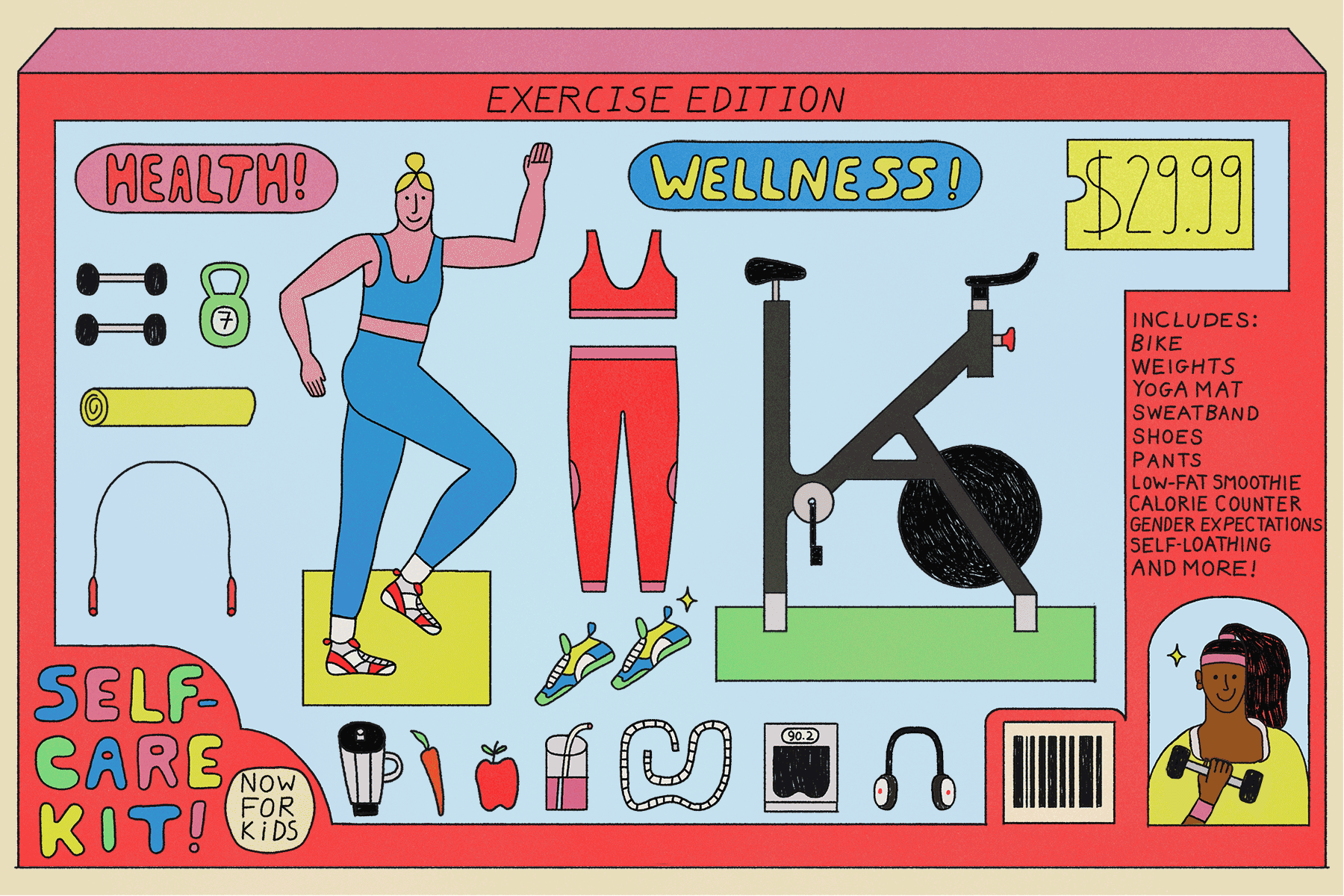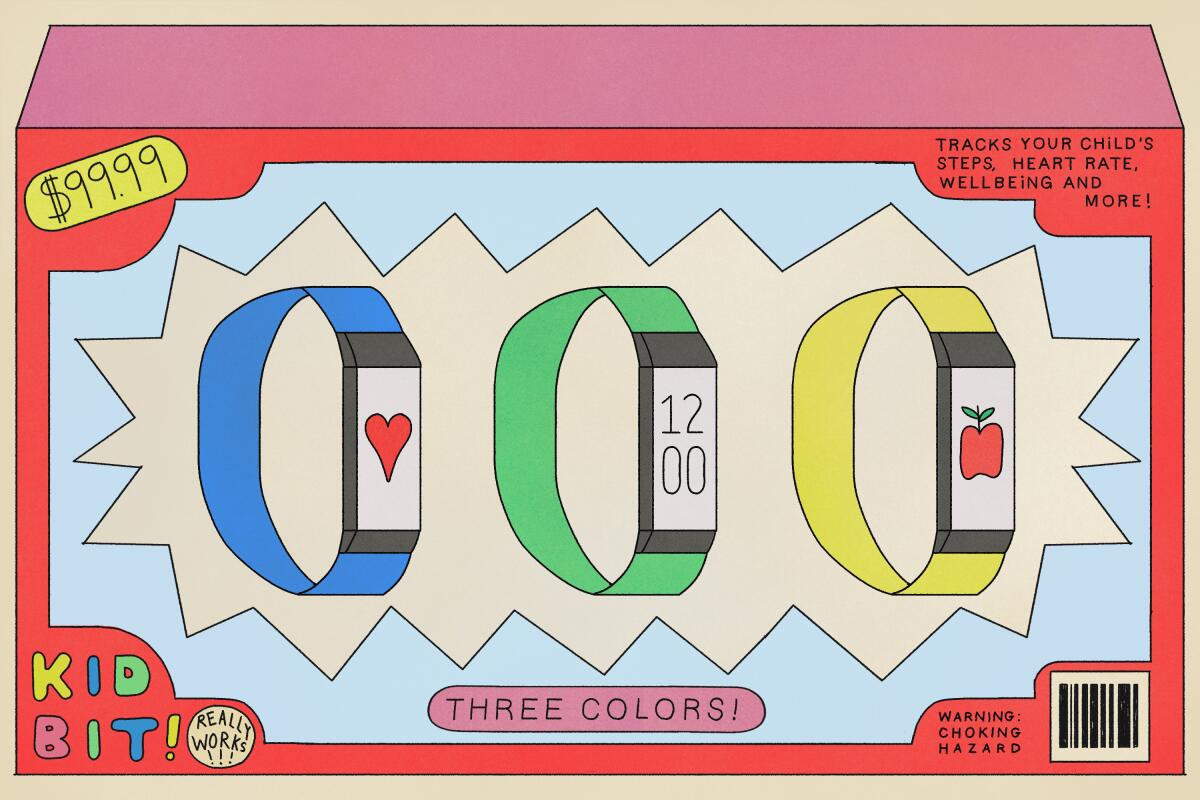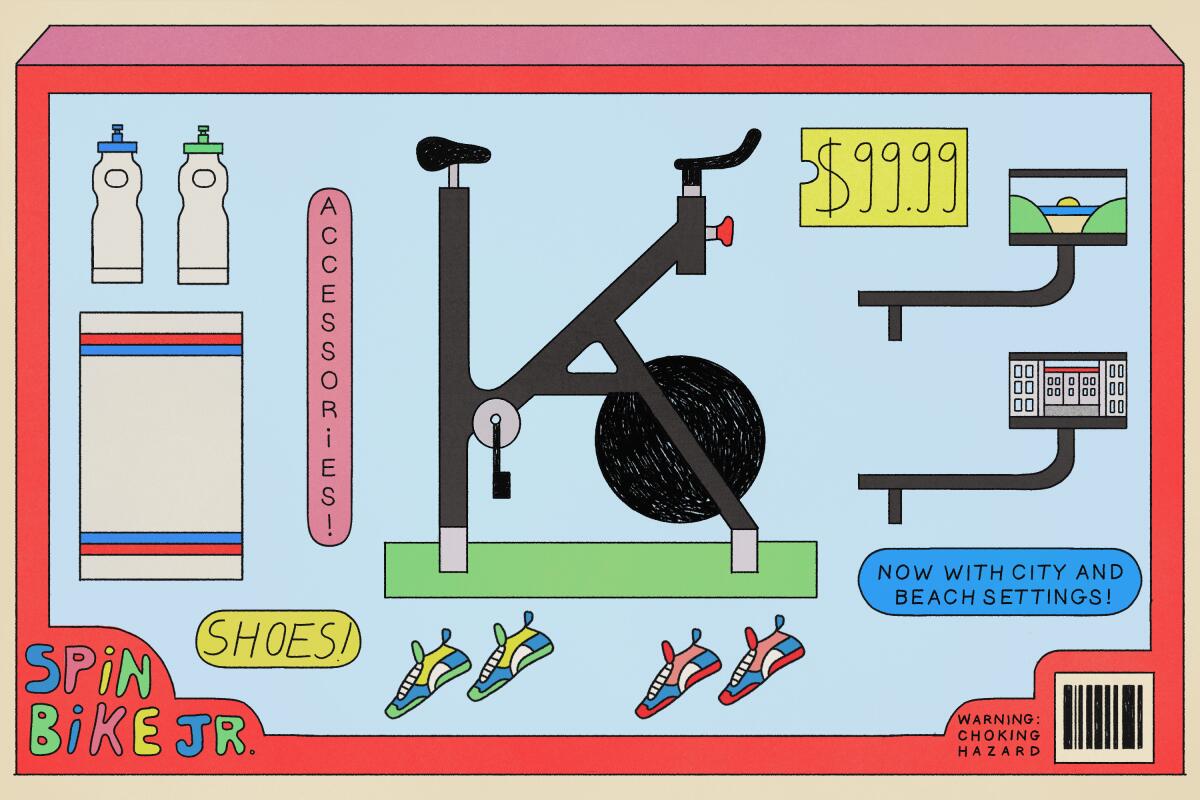Sign up for This Evening's Big Stories
Catch up on the day with the 7 biggest L.A. Times stories in your inbox every weekday evening.
You may occasionally receive promotional content from the Los Angeles Times.

Last year, Sammi Lewis marched up to her mother to complain about an assignment from a school wellness class on recording her food intake. What did you eat this week? How many calories and grams of protein, sugar, fiber or carbohydrates? The assignment included daily recommendations for meals, drinks and snacks.
“I was frustrated,” says the 15-year-old from Evanston, Ill. “To be honest, I was a little scared I would start thinking about how much or little I was eating if I did calculate my calories.”
Sammi has a rare congenital heart condition that had previously limited her diet. She no longer has any medically prescribed dietary restrictions but throughout her ordeal, the teen learned that nutritional requirements are far from uniform; everyone’s needs are unique, while preferences or access to healthy foods differ wildly.
Her food-tracking homework correlates with a broader interest in bringing “wellness” into children’s spaces. This ambiguous umbrella term — which conveys a more holistic approach to nutrition, fitness, sleep and much more — has become a lucrative opportunity for all kinds of industries, spurring toys, programs and apps for kids with often questionable benefits. School curriculums are significantly more rooted in scientific research but they too can sometimes unintentionally add more anxiety — and feed into and off of the larger wellness-for-kids ecosystem.
Young people are experiencing an alarming increase in mental health challenges, the U.S. surgeon general has said. Here’s what you should know.
Far from just promoting restrictive eating habits, the $4.5-trillion wellness industry has infused health with consumerism, productivity pressures and gendered societal expectations. This is not to say wellness itself is problematic; rather, it suggests that optimizing it is sometimes communicated to impressionable kids and teens in a counterproductive, if not potentially harmful, way.
“We should know better than to let our kids experiment with [wellness trends] without thinking and asking more questions,” says Sammi’s mother, Debi Lewis. “‘Why are you doing this? What do you hope will change?’”

Even pre-COVID-19, health experts witnessed children struggling with their mental and physical health. The pandemic only intensified it.
“The [child and adolescent mental health] situation is not getting better,” says Dr. David Anderson, a clinical psychologist at the Child Mind Institute. “We have a dearth of available care and access to resources.”
Increased rates of anxiety and depression have pushed educators and industries to arm kids with self-management tools. Schools have instituted a wide range of wellness courses, workshops and dedicated rooms teaching everything from nutrition to yoga. Teachers are incorporating mindfulness and breathing exercises at the start of class.
“There’s a greater awareness of the tremendous pressure and challenges that kids are facing younger and younger,” says Colin Sharkey, executive director of the Assn. of American Educators. “Unless you address some of those [issues], it makes it very difficult to have a healthy academic environment where you focus on learning.”
Public health experts say universal mental health screenings are integral in the youth mental health crisis. But most kids aren’t getting them.
Overall, most school initiatives have been lauded for teaching neurotypical kids how to better care for their health. But the small percentage of complaints — which do not reflect the majority of initiatives — pinpoint just how nuanced, complicated and sensitive health education can be. On social media, a cursory scan finds parents bemoaning tests that “grade” students on their wellness, counterintuitively propelling more stress. Another parent felt that an overemphasis on mental health conditions might pressure kids to develop one. “[My daughter] thinks that she’s supposed to have something [mentally] wrong with her,” wrote one mom on Twitter.
Mental health issues are rising faster for girls than for boys, so the idea of wellness may come into girls’ orbits earlier and more often. Teen girls, for example, learn about the latest wellness fad or product via TikTok and Instagram influencers, and even tween magazines. Katie Hurley, a child and adolescent psychotherapist based in El Segundo, and the author of “No More Mean Girls: The Secret to Raising Strong, Confident, and Compassionate Girls,” says girls are picking up crystals, getting into astrology and doing face masks regularly (to the point of drying out their skin). It’s not that these activities are intrinsically worrisome. Rather, the pervasive messaging continually directed at girls is having unintended consequences.
Girls get the message that “you need to be exercising, you need to be eating healthy, you need to be taking care of yourself. Self-care becomes a job,” says Hurley. “This is how they’re being told that they’ll be successful: if you manage yourself, if you ‘calm yourself down.’” Several adolescent patients tell her that they “don’t have the time” for all these activities.
The message that parents really need is that they don’t need stuff to help their kids lead a healthy life.
— Susan Linn, author of “Consuming Kids”
Affording all this self-care is another issue. In 2020, Mattel released its Barbie Wellness Collection to introduce “girls to the benefits of self-care through play.” By that, it meant that Barbie focused on personal well-being with what Barbie does best: accessories. She had a yoga mat, fashionable athleisure-wear, seven skin care masks, lotion bottles and even a fruit smoothie stand. Through Barbie’s armada of feel-good “things,” health was equated with the right purchases, narrowing wellness to its consumerist and appearance-based stereotypes.
“The message that parents really need is that they don’t need stuff to help their kids lead a healthy life,” says psychologist Susan Linn, a research associate at Boston Children’s Hospital and the author of “Consuming Kids.” “But the goal of marketers is to convince customers that their sense of well-being lies in some product that can be bought.”
If Mattel had called it a spa collection, it would be less controversial. But by calling it “wellness” and associating it with health, we shift these activities into something a lot more loaded. Still, a Mattel spokesperson said, “We are proud to have launched the line to celebrate wellness trends girls see around them at home, school and beyond.”
Wellness Barbie might be missing what true holistic wellness actually entails. The iconic doll doesn’t communicate anything substantial about relationships, developing an identity or social support, says Dr. Eugene V. Beresin, executive director of the Clay Center for Young Healthy Minds at Massachusetts General Hospital. “You can’t have a sense of well-being without friends, peers and parents. We’re pack animals.”
Likewise, Barbie’s YouTube channel — with more than 10 million subscribers — insinuates the lone individual can overcome negative emotions and stress. The “Self Care” collection of videos shows America’s most prolific blond addressing issues such as “feeling blue” and expressing vulnerabilities in a relatable way. But she mostly recommends breathing exercises, journaling, beauty rituals and meditation. Such activities, alongside the use of creative art, can in fact help people prevent and cope with anxiety, mental health experts explain. The issue is overemphasizing them as primary solutions.
This has long been a criticism aimed at the wellness industry. Personal responsibility is crucial, but the idea that we alone can manage health disregards communal support and addressing external forces. Or, at its worst, it suggests that one is stressed or depressed because they didn’t prioritize bubble baths.
“Rather than figuring out what are the pressures that are leading to the anxiety, what we seem to be doing is getting kids to talk about strong emotions using therapeutic language, but not to do anything about it,” says Nancy McDermott, author of “The Problem With Parenting: How Raising Children Is Changing Across America.”

Toys targeting both physical and mental health is a trend that’s here to stay, reports market research agency the NPD Group. Squishmallows — squeezable plush animals that reportedly offer comfort — have grown in popularity, as did puzzles rebranded as mental health tools. Fidget toys are marketed as soothing anxiety relief. “Therapy” dough has been infused with essential oils. A digital “Well-Beings” game, which gamifies wellness, is now available on Nintendo Switch. According to a survey of more than 20,000 3- to 18-year-olds by market intelligence firm the Insights Family, 71% of teens said they look to buy products that benefit their well-being.
There’s also been an increase in toys that would seem better suited for adults. Or, perhaps more accurately, a growing number of toys that mimic what adults are interested in.
Affirmation card decks and healing crystal kits have been tailored for tweens. Electronic meditation devices come in cute designs, such as the turtle-shaped Zenimal. Wearables have taken off too: Kid-friendly fitness trackers sport bright snazzy colors.
“Since the pandemic, that whole wellness sphere has just exploded,” says Kristin Morency Goldman, a spokesperson for the Toy Assn.
Famously, Little Tikes released a stationary bike in 2021 called the Pelican, complete with an attached video screen. Essentially a $157 tot-sized Peloton, the toy allows kids age 3 to 7 to pedal in place alongside their parents.
A portion of parents appreciate toys that allow kids to emulate their behavior — no different than a Fisher-Price baking set. Others believe such a toy sets their child up for success by teaching them the importance of exercise.
What is lost, seemingly, is that most adults opt for a stationary bike because they are too time-strapped to ride a bike outside, as kids presumably can do. “Moving your legs in a circular motion is not the same as becoming part of your neighborhood, seeing the seasons and breathing in the fresh air,” says Lenore Skenazy, president of Let Grow, a nonprofit that promotes childhood independence and resilience.
In a statement, Kevin Bloomfield, vice president of product development at Little Tikes, says, “The intention was never as a form of exercise equipment for children but rather to help imagine they can be like Mom or Dad.”
Still, this idea that we need to instill good exercise habits is starting younger and younger, according to childhood experts. Parents are signing their kindergartners up for yoga classes. “Cocomelon,” a popular streaming children’s show, has a “Stay Healthy” baby nursery rhyme with lyrics such as “Working out is good for you.” There are even toy barbell powerlifting sets “to train children slowly.” (The Fisher-Price version comes with a fake protein shake.)
Hurley, the psychotherapist, says that organized sports — the modern mainstay of child movement — got axed during pandemic lockdowns. Some parents then focused on micromanaging exercise instead of contemplating fitness in a fun, natural way.
More than that, by mediating every mental and physical health need, “We run the risk of fetishizing health and making it something that’s not just a normal part of life,” says McDermott, “The Problem With Parenting” author.
To replace free play with adult-run exercises and relaxing spa-like experiences seems to be a misunderstanding of how kids develop, Skenazy of Let Grow says. “We are underestimating the species by assuming that if a parent doesn’t start teaching kids how to do the Downward Dog at 3, the kid will just be sitting in a chair, sucking their thumb until college.”
After surviving an ongoing pandemic and a worsening mental health crisis, some people find relief in Grief Yoga.
Kids organizing their own games with peers is wellness, says Skenazy. It’s the skills of making something happen, making a friend, getting along, managing emotions and compromising so that the game can continue. “It is very soothing to be competent.”
Some parents hold there’s a balance between overemphasizing wellness and simply cultivating better habits. Patrick Gaughan, a high school teacher in Clarks Summit, Pa., bought his daughter a Fisher-Price mini “Peloton” when she was 4 after she requested it. He says it’s a way for her to use her tablet in a positive manner. “If you want to create a habit of fitness or health for your children, it has to be something that they enjoy,” says Gaughan.
Kait Vinnedge of Niles, Mich., bought her 7-year-old daughter a Breathe With Me Barbie. The doll emits jingle-like sounds as it repeats several guided meditation exercises. Vinnedge says her daughter, who is in remission after being diagnosed with leukemia, finds comfort in the doll’s meditation when she’s anxious.
“Kids have big feelings they can’t understand,” says Vinnedge. “I don’t think that if a kid is just left to their own free will, they’ll automatically develop these mature, calming techniques.” As for criticisms that Barbie teaches a simplified, glitzy version of meditation, Vinnedge replies, “When we explain anything to children, we simplify and put it in super-easy-to-understand terms.”
Anderson, of the Child Mind Institute, agrees that certain kids need help learning how to regulate strong emotions. Toys might help facilitate that, though they shouldn’t be overemphasized. “It’s more about what practices it brings into your home,” says Anderson. “It’s not about things.”
For Debi Lewis, her daughter’s food-tracking homework got them discussing topics such as health metrics rooted in science, economically diverse communities and food insecurity. “All these things are important to talk about openly,” says Lewis, “so when we react negatively to assignments like this, we can show that we’re doing it from a place of compassion.”
Rina Raphael is a journalist and the author of the forthcoming book “The Gospel of Wellness.”
Sign up for This Evening's Big Stories
Catch up on the day with the 7 biggest L.A. Times stories in your inbox every weekday evening.
You may occasionally receive promotional content from the Los Angeles Times.